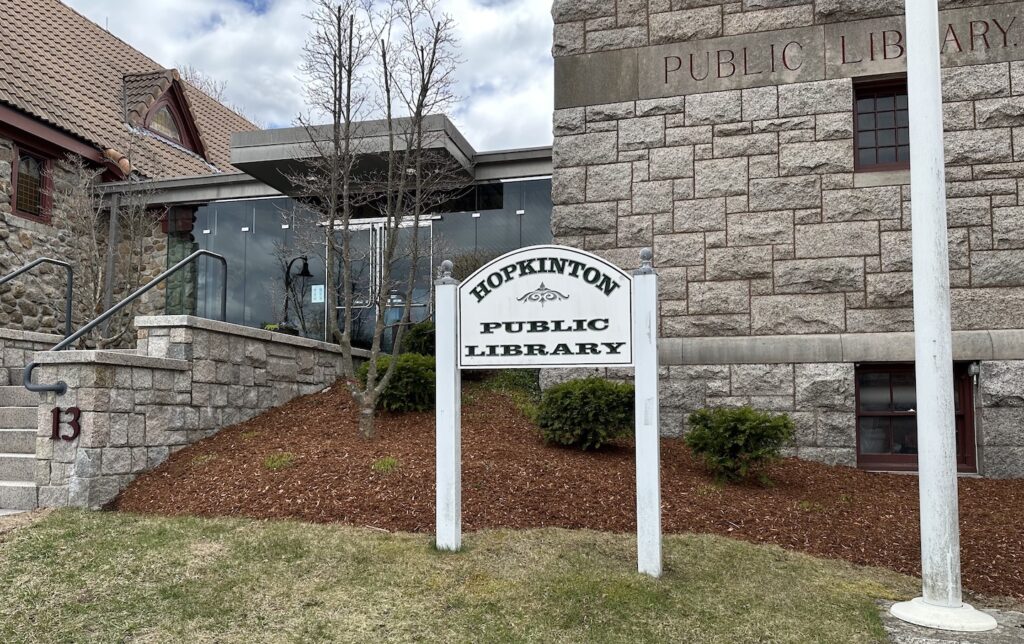As residents celebrated Thanksgiving this year, the Hopkinton Public Library had on display copies of 18th century documents relating to the Native American settlement on the land that became Hopkinton.
In 1669, Reverend John Eliot, a Puritan missionary to local Native Americans, developed the settlement first known as Magwonkkommok, then Magunco, and now known as Hopkinton — as well as Ashland and parts of Holliston and Upton.
Magunco was tract land — land not allocated for settlers and previously occupied by Nipmucs. This land was selected by Eliot to settle a “civil” community. Magunco was Eliot’s seventh such town and was created using an artificial settlement of “praying Indians.” Artificial settlements were formed during this time by housing a group of Native Americans in a certain area in order to boost the land’s value and create life there. The Magunco settlement began with 11 families, also considered 55 “souls.”
The Nipmucs were guided by Pomhamon, who called the town Magunco, roughly translated to “the place of great trees.” The settlement had a teacher named Job and included religious members and farmers. The residents followed civil orders, worshipped God and observed Sabbath, following the other praying communities.
As the settlement was developing, King Philip’s War began. King Philip’s War occurred during the early interactions between indigenous tribes of New England colonies and the European colonists. Indigenous tribes, rebelling against the English takeover of their lands and society, targeted the colonies in small attacks. In Framingham on Feb. 1, 1676, nine members of the Earnes family were killed or taken captive in an altercation that was called the “Eames Massacre.” Six members of the Magunco Nipmucs were caught in the attack, and three were executed.
After the 14-month war ended in 1676, it was decided that the remaining Magunco Indians would join the tribe native to Natick. There is no record of any of the original Magunco settlers returning to the land that now is Hopkinton.
After the town was bought by trustees of Harvard College, people were allowed to settle for a fee. The trustees named the town after the late Edward Hopkins, who had left a large sum of money to be invested in New England land.
To get a more in-depth view of events and the founding of Hopkinton, visit the Hopkinton Public Library to see the 18th century documents relating to the Magunco settlement and the founding of Hopkinton. There also are scanned documents that can be found on the library’s website, hopkintonlibrary.org/resources.asp.















For more information about the Eames Massacre visit The Framingham History Center
https://framinghamhistory.org/?blm_aid=164829185